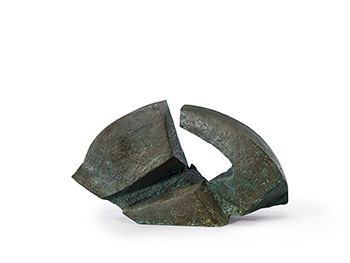ILLUSTRATED:
Ju Ming, Jean-Luc Chalumeau, Editions Cercle d'Art, Paris, 2002,color illustrated, pp. 48-49
Ju Ming, Singapore Art Museum, Singapore, 2004,color illustrated, pp. 76-77
Ju Ming Taichi Sculpture, Guangxi Fine Arts Publishing House,Nanning, 2006, color illustrated, pp. 124-125
This sculpture is to be sold with a certificate of authenticitysigned by the artist, issued by Jun Youn Sculpture Gallery, Taipei.
Catalogue Note:
Public presentation of the “Taichi” series was once questioned by the art and cultural circles. Many were unable to understand the transition, but those who were able to calmly experience it could feel it as one of the signs of his transformation into a great master. His departure from local art is also a milestone set by his sculpting method and artistic style. Although the pieces of sculptures included in the series are numerous, they are not invariable. From learning Taichi to sculpting it, the earliest creations required picture references. With the passage of time, his gradual understanding of and familiarity with Taichi moves increased, and he became more absorbed in the study of the mental effects of Taichi. His sculptures also began to show the firmness and resoluteness revealed through his thorough experience. Under each calm and composed image hides the energy of Taichi and the artist’s experiences in life.
Details that are irrelevant to the main theme are no longer seen in the Taichi Arch. The creation has plunged into an almost purely abstract stage. Like looking at an abstract Baroque painting, things that appear before one’s eyes are the dance poses, geometrical planes and asymmetrical forms on his canvas. Increased levels of adornment are given to the space surrounding this work, the richness of which does not go beyond its tempo. The simple carvings show the artist’s state of self-denial. We can see an unfettered Ju Ming who no longer wants to simply copy a form like a traditional craftsman. Thanks to the joyful moods brought by Taichi, he cannot help but transform it into an eternal entity. The uniqueness of the “Taichi Arch” lies in its harmonious coexistence with the corner where it is located. It has gradually become an important component of the surroundings, integrating the Oriental philosophical thinking of the union of heaven and earth in the gardens of China. The extensity presented by the sculpture, regardless of its size, is unrestricted. Perhaps the feeling of infinite extent is a result of the spiritual character it is endowed with by Ju Ming.
